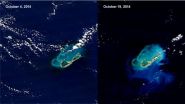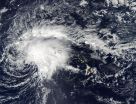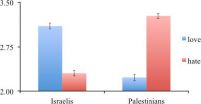(Press-News.org) WASHINGTON, D.C., October 21, 2014 -- Hikers are generally advised that the weight of the packs they carry should correspond to their own size, with smaller individuals carrying lighter loads. Although petite backpackers might appreciate the excuse to hand off heavier gear to the larger members of the group, it turns out that they may not need the help.
While leading students on extended backpacking trips for Outward Bound, Kansas State University physics professor Michael O'Shea noticed that some of the smaller students could comfortably carry a greater pack weight than the larger ones of similar fitness levels.
The explanation, he reasoned, might have something to do with the fact that hikers must haul not only their packs, but also their own body weight. He incorporated both of these variables into a model described this week in the journal The Physics Teacher, published by the American Association of Physics Teachers (AAPT). The model provides a more accurate estimation of the pack weight a given hiker will be able to carry and an example of how real-world modeling examples can be used in the classroom.
"Online advice from several sources was somewhat misleading in suggesting that pack weight should be a certain percent of a person's weight," said O'Shea. However, as the size of any animal increases, strength increases more slowly than body weight—the reason why tiny ants can carry a disproportionately heavy load compared to their weight.
He combined this information with body scaling proportions obtained from other research to create a model matching his observations. The resulting equation takes into account the hiker's entire load—backpack plus body weight—and can be used to determine the maximum backpack weight for an individual of a given size.
"Overall strength of an individual does not determine how heavy a backpack a person can comfortably carry," said O'Shea.
The model does make a few assumptions—namely, that the hikers being compared have similar body-fat percentages, and thus that increase in size does correspond to a proportional increase in strength. Nevertheless, it provides a more nuanced estimation of hikers' carrying capacity than does a simple proportion of body weight.
O'Shea's model could help inform hikers' packing decisions, but it also fits into the classroom: "Students should be able to see how some aspects of complex systems, in this case the frame of a human being, can be modeled in a relatively simple way to extract useful information," he said.
INFORMATION:
The article, "Backpack Weight and the Scaling of the Human Frame," by Michael O'Shea, appears in the journal The Physics Teacher on Tuesday, October 21, 2014. After that date, it can be accessed at: http://dx.doi.org/10.1119/1.4897584
ABOUT THE JOURNAL
Dedicated to the strengthening of the teaching of introductory physics at all levels, The Physics Teacher provides peer-reviewed materials to be used in the classrooms and instructional laboratories. See: http://scitation.aip.org/content/aapt/journal/tpt
VIDEO:
Chapman University has initiated the first comprehensive nationwide study on what strikes fear in Americans in the first of what is a planned annual study. The Chapman Survey on American...
Click here for more information.
ORANGE, Calif. – Chapman University has initiated the first comprehensive nationwide study on what strikes fear in Americans in the first of what is a planned annual study. According to the Chapman poll, the number one fear in America today ...
A team of researchers led by NOAA's Office of National Marine Sanctuaries have discovered two significant vessels from World War II's Battle of the Atlantic. The German U-boat 576 and the freighter Bluefields were found approximately 30 miles off the coast of North Carolina. Lost for more than 70 years, the discovery of the two vessels, in an area known as the Graveyard of the Atlantic, is a rare window into a historic military battle and the underwater battlefield landscape of WWII.
"This is not just the discovery of a single shipwreck," said Joe Hoyt, a NOAA sanctuary ...
NASA's Aqua and Terra satellites captured before and after images of Bermuda and surrounding waters before and after Hurricane Gonzalo struck the island on Oct. 17. The images revealed how Gonzalo stirred up the sediment from the ocean bottom.
The MODIS instrument or Moderate Resolution Imaging Spectroradiometer that flies aboard NASA's Aqua and Terra satellites provided imagery of Bermuda and the stirred sediment. In a comparison of imagery before and after Hurricane Gonzalo passed, the after image showed sediment streaming east and south of Bermuda. The MODIS instrument ...
Slow-moving Tropical Storm Ana was still affecting parts of Hawaii on Oct. 20 when NASA's Aqua satellite passed overhead from its orbit in space. Imagery from Aqua showed that wind shear was affecting the storm.
The Moderate Resolution Imaging Spectroradiometer or MODIS instrument aboard NASA's Aqua satellite captured a visible picture of Tropical Storm Ana over Hawaii on Oct. 20 at 23:55 UTC (7:55 p.m. EDT). The image showed that most of the clouds and showers were north and east of the center of circulation, pushed away from the center by strong southwesterly wind ...
CHAMPAIGN, Ill. — Publicly traded corporations are increasingly publishing social responsibility reports for investors, who now consider such information alongside traditional financial data before investing in a company.
But according to new research from a University of Illinois expert in financial reporting and financial statement analysis, less-numerate investors are more susceptible to style and presentation effects of the reports, potentially leading them to make unintended judgments about the company.
W. Brooke Elliott, a professor of accountancy at Illinois, ...
CHICAGO –A new study in the Journal of Food Science, published by the Institute of Food Technologists (IFT), evaluated consumers' choice in fresh tomato selection and revealed which characteristics make the red fruit most appealing.
The researchers found that the most important fresh tomato attributes were color, amount of juice when sliced and size. Consumers were most drawn to fresh tomatoes shown to be red, firm, medium/small sized, crisp, meaty, and that contain few seeds.
The study also found that a lack of characteristic taste and flavor – including ...
What makes human conflict intractable – and how can psychological research resolve historic disagreements? A new study published in the Proceedings of the National Academy of Sciences by a team of researchers from The New School for Social Research, Northwestern University and Boston College demonstrates how seemingly unsolvable political and ethnic conflicts are fueled by asymmetrical perceptions of opponents' motivations – and that these tensions can be relieved by providing financial incentives to better understand what drives an adversary group.
"This ...
Boulder, CO, USA — Stegosaurs might be portrayed as lumbering plant eaters, but they were lethal fighters when necessary, according to paleontologists who have uncovered new evidence of a casualty of stegosaurian combat. The evidence is a fatal stab wound in the pubis bone of a predatory allosaur. The wound – in the conical shape of a stegosaur tail spike – would have required great dexterity to inflict and shows clear signs of having cut short the allosaur's life.
"A massive infection ate away a baseball-sized sector of the bone," reports Houston Museum ...
OAK RIDGE, Tenn., Oct. 21, 2014—Scientists at the Department of Energy's Oak Ridge National Laboratory have discovered exceptional properties in a garnet material that could enable development of higher-energy battery designs.
The ORNL-led team used scanning transmission electron microscopy to take an atomic-level look at a cubic garnet material called LLZO. The researchers found the material to be highly stable in a range of aqueous environments, making the compound a promising component in new battery configurations.
Researchers frequently seek to improve ...
Boulder, CO, USA — Washington's coast is so close to the seismically active Cascadia Subduction Zone that if a megathrust earthquake were to occur, a tsunami would hit the Washington shoreline in just 25 minutes.
One coastal community is preparing for such a disaster by starting construction on the nation's first tsunami evacuation refuge, large enough to shelter more than 1,000 people who are within 20-minute walking distance.
The vertical evacuation-refuge will be the roof of the gym of the new school in Grays Harbor County, Washington. The Ocosta Elementary ...







